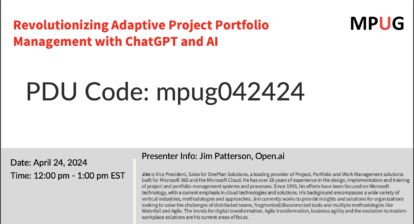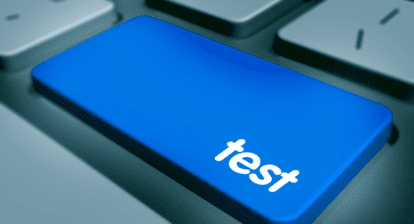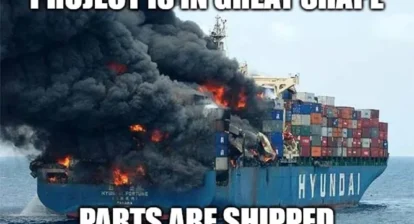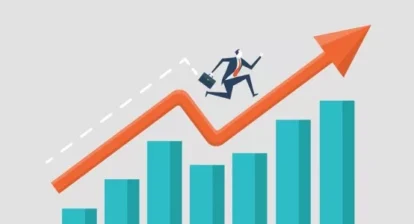
It’s funny how things happen. I was chatting recently with a couple of project managers developing vehicle products. The discussion turned toward supplier management, and I asked them how much travel is involved in their work, especially regarding supplier interactions. Their reply was, “Not too often.” I was a bit surprised by this because, in my experience as a project manager, I would have significant supplier interactions from the beginning of the supplier selection process. But, even if I was not contributing, I listened and gained some understanding of the supplier’s competence, approach, and potential risks.
Managing procurement on projects comes in three main parts. Planning is the first part, which involves the creation of the official procurement management plan. Next, the decisions involve which items will be internally produced and which will be externally outsourced. Ultimately, project closure will have close connections to the procurement efforts.
When exactly does procurement begin?
We will explore the beginning phases of procurement as it relates to project management and the project manager’s role in the next few sections.
Bid Review and Award
Procurement starts with whom to select. The next question is, what do we need or want to outsource? This requires exploration. Controlling procurement includes evaluating regular internal status updates, reviewing contractor agreements, reviewing vendor progress and performance updates, conducting inspections and audits, assessing work orders, and issuing additional payments as necessary.
Closing procurement involves completing all procurement-related tasks, such as verifying that all work has been completed satisfactorily and that all payments have been made.
Procurement is a project partner, and the assigned buyer is a project team member who attends team meetings. Early on, the project manager may not be included in some events. However, the project manager should know the activities part of the procurement process and the exploration results. We provide a few examples below in the artifacts section. The organization’s approach to managing the project will impact the effort and scope of the project manager.
Supplier Selection
Depending on what we try to achieve, a relationship with a supplier may be long-term, whether we like it or not. One of us worked at a company that had engaged a supplier to develop a key, highly tooled component for a vehicle line. The project when well, producing the final product on time. Some of the development costs were amortized in the piece price. This was a way to reduce the customer’s upfront costs for the product while ensuring the supplier was compensated for their talent and effort. The procuring company then purchased another vehicle brand and wanted to develop another highly tooled product to replace the 1-year-old product. Upon informing the present supplier, the production run for their supplied product would be reduced by years with the associated volume of parts. The supplier promptly raised the product’s sale cost for the customer to recover the development costs. The corporate buyers were shocked and wanted to find a quick, minimal-risk way out of using this supplier. I gave them the engineering perspective of tearing down a line and moving software and tooling to another company while vehicle production is full steam ahead.
Procurement Artifacts
For any discussion on any topic, if you expect to create some common understanding, it is good to provide a base lexicon. Therefore, we briefly describe the procurement artifacts and steps for selecting a supplier.
- Request for Proposal (RFP): This document solicits proposals from potential suppliers or vendors. It includes detailed information about the project or product procured and the constraining requirements and specifications.
- It might be prudent for the project manager to understand the project’s scope via the RFP, and the potential supply base for the RFP.
- Request for Quotation (RFQ): This document requests price quotes from vendors or suppliers for specific goods or services.
- The project manager is aware of the winnowed field of suppliers and the strengths and weaknesses of each as connected to the project objectives.
- Purchase Order (PO): The buyer issues this document to the supplier to authorize the purchase of goods or services.
- The project manager must be part of this, as the PO costs will be part of the project’s cost. A lack of control in this regard will be a project budget buster.
- Contract: This document outlines the terms and conditions of the agreement between the buyer and the supplier, including delivery schedules, payment terms, and warranties.
- The contract will include project requirements, such as prototype part iterations, and may impact project cost and schedule.
- Bill of Materials (BOM): This is a list of all the materials needed to complete a project or manufacture a product. It is often used in the procurement process to help identify the materials that need to be purchased.
- The project manager may have little to no interactions in the BOM. However, the project manager should be aware of the BOM’s consequences on the product cost, which is often a significant attribute of the project performance and the business objectives. Additionally, the project should have systems in place to manage the changes and adaptations of the product over time, specifically, Configuration Management. Again, this is NOT a project manager’s responsibility, but the project manager should be aware.
- Vendor Evaluation Form: This form evaluates potential vendors or suppliers based on their qualifications, experience, references, and pricing.
- The project manager will not be part of this, but the evaluation results give the project manager a glimpse of the specific strengths and weaknesses of the vendor.
- Invoice: The supplier issues this document to request payment for goods or services. It includes information about the items sold, the price, and applicable taxes or fees.
- The project manager will often be part of this invoicing process, specifically in determining the veracity of the invoice.
- Receipt: The buyer issues this document acknowledging that goods or services have been received and accepted.
- The project manager will be part of the approval part, resulting in the receipt.
- Delivery Note: The supplier issues this document to confirm that the goods were delivered to the buyer. It includes information about the items, quantity, and delivery date.
- Confirmation of the delivery of the goods is necessary to balance the project books and likely items in the Gantt chart.
- Quality Control Checklist: This document ensures that goods or services meet the required quality standards. It includes a list of criteria that must be checked and verified before acceptance.
- The customer’s quality assurance staff and project team members will review the vendor’s quality checklist, comparing it to the customer’s expectations. From experience, this will result in merging the two lists into a common supported variant. Sometimes this does not happen due to cost or logistical constraints at the supplier level. This will result in some risk to the project and remediation actions from the customer.

Project Manager Role in Procurement
In a project procurement setting, the project manager must ensure that all activities align with the project’s objectives, timeline, and budget. The following are some of the key responsibilities of a project manager in project procurement:
- Developing the procurement plan: The project manager is responsible for creating a procurement plan that outlines the process for procurement, including the selection of suppliers, negotiation of contracts, and management of procurement risks.
- Managing supplier selection: The project manager is responsible for selecting suppliers that can provide the necessary goods or services to meet the project’s requirements. This includes evaluating proposals, negotiating contracts, and monitoring supplier performance.
- Monitoring procurement budget: The project manager is responsible for ensuring that procurement activities are carried out within the budget. This includes monitoring spending, controlling costs, and adjusting the procurement plan as needed.
- Managing procurement risks: The project manager is responsible for identifying and mitigating procurement risks, such as delivery delays or cost overruns. This includes developing contingency plans and monitoring risk management activities.
- Collaborating with stakeholders: The project manager must work closely with stakeholders, such as the procurement team, project sponsor, and other stakeholders, to ensure that procurement activities are aligned with project objectives.
- Ensuring compliance with procurement policies and procedures: The project manager is responsible for ensuring procurement activities comply with the organization’s procurement policies and procedures.
Overall, the project manager is responsible for ensuring that procurement activities support the project’s goals and are executed efficiently and effectively.
Project Manager’s Role in Supplier Selection
The role of a project manager in supplier selection is to lead the process of identifying and selecting suppliers that can provide the goods or services needed to meet the project’s requirements. The following are some of the critical responsibilities of a project manager in supplier selection:
- Defining the procurement requirements: The project manager must work with the project team and stakeholders to define the requirements, including the scope of work, budget, and timeline.
- Identifying potential suppliers: The project manager is responsible for identifying potential suppliers, either through internal databases, industry networks, or other sources.
- Evaluating proposals: The project manager is responsible for evaluating proposals from suppliers and assessing their ability to meet the project’s requirements. This includes reviewing the suppliers’ technical capability, experience, and financial stability.
- Negotiating contracts: The project manager is responsible for negotiating contracts with selected suppliers, including terms and conditions, pricing, delivery dates, and any other critical aspects of the agreement.
- Managing supplier performance: The project manager monitors supplier performance and ensures they deliver goods or services according to the agreed terms and conditions. This includes managing relationships with suppliers and addressing any issues that may arise.
- Ensuring compliance with procurement policies and procedures: The project manager must ensure supplier selection activities comply with the organization’s procurement policies and procedures, including ethical procurement practices and anti-corruption policies.
The project manager is critical in selecting suitable suppliers and delivering the goods or services needed to support the project’s success.
Project Manager’s Role in Negotiating Contracts
The role of a project manager in negotiating contracts is to lead the process of finalizing and executing contracts with suppliers, contractors, or other parties involved in the project. The following are some of the key responsibilities of a project manager in negotiating contracts:
- Preparation: The project manager must prepare for contract negotiations by thoroughly understanding the project requirements, procurement policies, and the needs and interests of the stakeholders. This includes reviewing the proposals, contracts, and other relevant documents.
- Negotiating terms and conditions: The project manager is responsible for negotiating the terms and conditions of the contract, including the scope of work, pricing, delivery dates, performance guarantees, and any other critical aspects of the agreement.
- Managing expectations: The project manager must manage the stakeholders‘ expectations and ensure that the negotiated contract is aligned with the project’s objectives, timeline, and budget.
- Addressing risk: The project manager must consider and address any risks associated with the contract, including legal, financial, and operational risks. This includes negotiating risk management provisions in the contract.
- Finalizing the contract: The project manager is responsible for finalizing the contract, including reviewing and approving the draft agreement, obtaining approvals from relevant parties, and executing the contract.
- Monitoring contract performance: The project manager must monitor the performance of the contract, including ensuring that the agreed terms and conditions are met and taking action to address any issues that may arise.
Negotiating contracts is a critical aspect of project procurement and requires strong negotiation skills, attention to detail, and an understanding of the organization’s procurement policies and procedures. In addition, the project manager must ensure that the contracts support the project’s goals and are executed efficiently and effectively.

Contract Closure
Procurement and project contract closure are separate processes that are important in the overall project management process.
Procurement closure involves completing all procurement-related activities, including finalizing contracts, resolving any outstanding issues with vendors or suppliers, and ensuring that all goods or services have been delivered and accepted.
Project contract closure involves formally ending a project contract once all deliverables have been completed and accepted by the customer or client. This process ensures that all project objectives have been met, all deliverables have been completed and accepted, and all contractual obligations have been fulfilled. It also involves the final payment to the vendor or supplier and the release of any remaining funds held in escrow.
Both procurement and project contract closure are essential for the successful completion of a project. Properly closing out procurement activities ensures all contractual obligations are met, and all documentation is filed correctly and archived. Project contract closure ensures that all deliverables have been met, all contractual obligations have been fulfilled, and the project has been completed.
Conclusion
In conclusion, managing procurement on a project involves planning, bid review, award, controlling procurement, and closing procurement. While the procurement team handles the majority of the procurement process, the project manager must be aware of the activities involved and their impact on the project’s cost, schedule, and performance. Effective procurement management can contribute significantly to a project’s success, and the project manager should prioritize its oversight throughout the project’s lifecycle.







